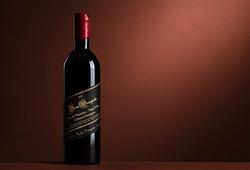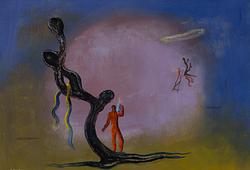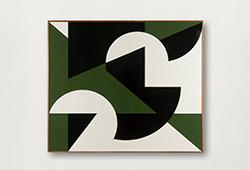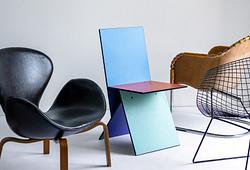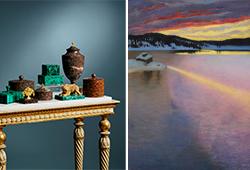Roberto Matta
"Azzoppi la natura"
Signed with monogram. Verso dated -76. Canvas 100 x 100 cm. A certificate issued by Alisée Matta, Archives de l'oeuvre de Matta, accompanies the work.
Provenance
A life dedicated to art – a private collection of modern Swedish and international art.
More information
Roberto Matta Echaurren was born in 1911 in Santiago, Chile. His family, of Basque descent, belonged to the country’s wealthy and leading social class. After earning a degree in architecture in 1931, he left Chile and traveled to Italy, Spain, Yugoslavia, England, and the Soviet Union. At the age of 23, he worked in Paris as a draftsman in the renowned architect Le Corbusier’s studio. Through friends and recommendations, Matta had the opportunity to meet Salvador Dalí, who was greatly impressed by the young architect’s drawings and encouraged him to show them to the French poet André Breton, leader and principal theorist of Surrealism. The drawings made a strong impression on Breton, and in 1937 Matta joined the Surrealist group.
With the outbreak of World War II in 1939, several members of the Surrealist group left Europe for the United States. In New York, Matta became a link between the European Surrealists and the New York School artists. He remained there until 1948, after which he returned to Europe and France.
Matta settled in Paris in 1954 and over the following years traveled extensively to Cuba, South America, and Africa. In addition to painting, he explored other media, including sculpture, ceramics, photography, and video installations.
Matta’s paintings reveal an inner, infinite space—a boundless sphere that allows the imagination free rein, where the eye follows organic, geological, and geometric formations in constant transformation.




